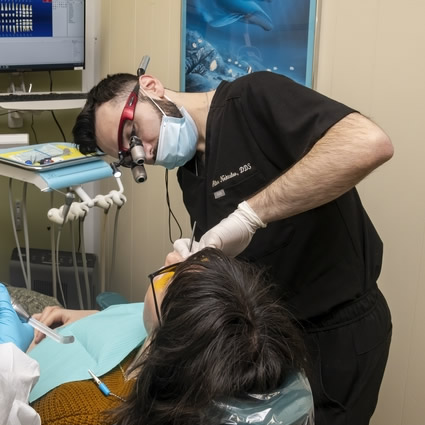Dental Fillings in Brooklyn
 Getting a dental filling is one of the most common procedures to help restore normal tooth function and prevent further damage from cavities. When a cavity is close to the root, it can cause a lot of pain. Delaying medical attention may affect our ability to save the tooth; we recommend scheduling an appointment with our dentist as soon as possible.
Getting a dental filling is one of the most common procedures to help restore normal tooth function and prevent further damage from cavities. When a cavity is close to the root, it can cause a lot of pain. Delaying medical attention may affect our ability to save the tooth; we recommend scheduling an appointment with our dentist as soon as possible.
The most common reason for tooth damage is poor oral hygiene. Not brushing and flossing daily can leave food residue on your teeth. The residue lingers until it starts to eat away at the tooth. Sugar is one example of a food that promotes cavities. Broken, chipped, or cracked teeth may also be candidates for a filling.
Steps to Achieve a Healthier Smile
As with any procedure at Aesthetic Dental, during the preliminary consultation, our dentist conducts a complete examination of the teeth to identify the main areas of damage. In some cases, X-rays may be necessary to obtain a good picture of the condition of the dental canals.
Placing a filling is the best option for minor damage from cavities, loss of a previously installed filling, or a tooth injury that doesn’t affect the root. Most people discover they have a cavity when they experience acute pain. Fillings help correct the shape of a tooth and its functionality using materials specially manufactured for this purpose.
Having a filling placed is relatively simple but also requires specific skills. After making sure the patient is comfortable, our dentist cleans the affected area of the tooth and fills it with the chosen filling material based on the patient’s preference. Once placed at the site of the damage, it protects sensitive tissues from further destruction.
The choice of anesthesia is decided in consultation with the patient. We generally use local anesthetics injected into the problem tooth’s area. However, for people with hypersensitivity or severe anxiety, the patient may choose general anesthesia or sedation.
Take Care of Decay Today
Our dentists remove the decay and fill your teeth to keep them healthy. Contact Aesthetic Dental to book an appointment today.
CONTACT US
Frequently Asked Questions
Are there any restrictions after receiving a tooth filling?
How often do I need to change my fillings?
What happens if the tooth is not filled?
Unlike amalgam material, this material pairs well with natural teeth, and unlike cement, it allows us to create reliable, durable fillings. While more costly than other materials, it’s durable, non-toxic, and won’t destroy tissues, shrink, or require special care.
What other materials are fillings made of?
Metal fillings (amalgams) are alloys based on silver, copper, and mercury metals. These wear-resistant and affordable materials are only used for filling molars because they do not present well aesthetically.

